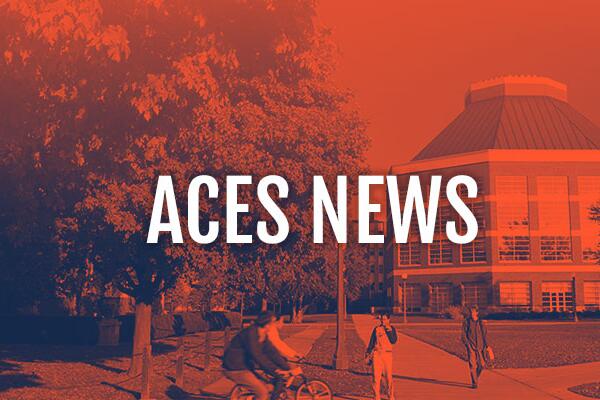Creating a Surrogate Prairie for Grassland Birds

June 16, 2003
URBANA - Illinois has seen a major decline in the populations of grassland birds and other upland wildlife over the last 30 years, according to Richard E. Warner, researcher at the University of Illinois and director of Illinois-Indiana Sea Grant. He explained that agricultural land use has changed substantially in the past 100 years, contributing to the pronounced declines.
"Historically, diversified farms that dominated the rural Illinois landscape throughout much of the late 1800s and 1900s included livestock, so some of the land was used for hay and pasture. This rotation farming system provided attractive cover for grassland birds. Now, most farms are specialized in raising corn and soybeans. Livestock production has waned and grassy fields in hay and pasture are no longer common."
Warner, along with graduate students Jeff Walk and Eric Kershner wanted to find out how beneficial small amounts of grassy cover on farm landscapes would be for upland wildlife and whether such habitats could be established and managed in an inexpensive and simple manner by farmers or other land managers. In order to answer these questions, a research project funded by the Illinois Council for Food and Agricultural Research (C-FAR) was conducted in southeastern Illinois near the Prairie Ridge State Natural Area.
Prairie Ridge is in the midst of an intensive farm mosaic. The area consists of nine grassy tracts ranging from seven to 120 hectare that were removed from agricultural use between 1963 and 1982. For the study, several fields were diverted from agricultural use within 0.5 to 1 km of the Prairie Ridge State Natural Area and seeded with cool season forage grasses and legumes. The study focused on the habits of dickcissels and Eastern meadowlarks, although other species were considered as well. The birds were captured and tiny transmitters were attached to their backs so their movements could be tracked and their nesting habits observed.
The results of the study showed that small satellite fields immediately attracted a wide variety of nesting birds, including rare and endangered species associated with the core grassland management area in Prairie Ridge State Natural Area and the nest success was high enough to sustain bird populations.
The small grassy cover areas could be established and managed for up to several years relatively cheaply using techniques that are familiar to farmers. And the areas can be optimally managed in ways consistent with rotational grazing schemes and farm programs that divert cropland from production.
Warner said that the fields established in grasses for three to five years served as a surrogate prairie for many of the grassland birds, much like rotation farming of the by-gone era, “Illinois is scattered with small natural areas–some more carefully managed for grassland birds than others,” said Warner, “But this study showed that farmers don’t need to create complex grassland environments for these birds. Low-cost grasses and pasture mixes are attractive habitats as well, so farmers don’t have to establish and manage a complex prairie to help conserve many of these bird species.”
-30-